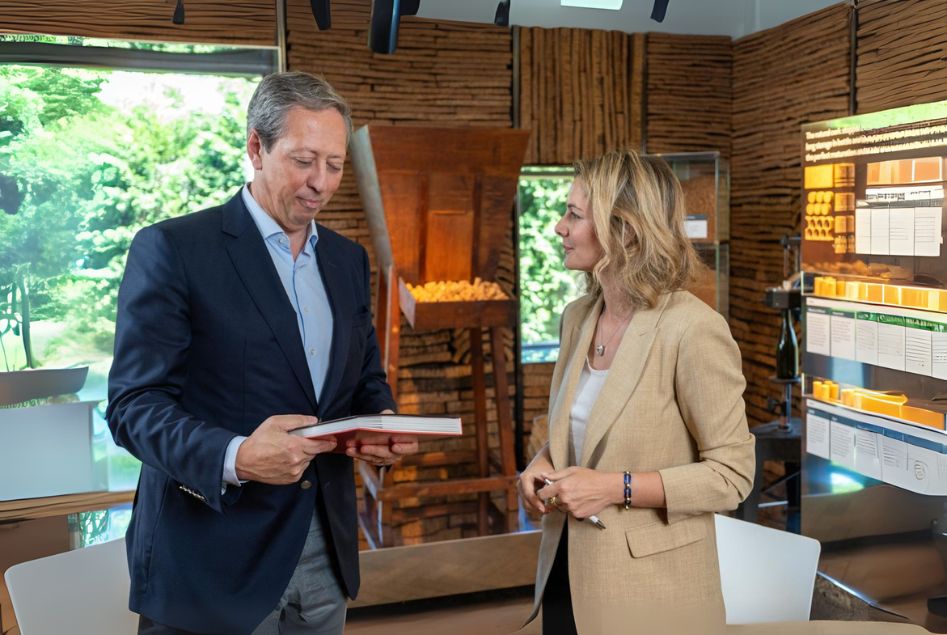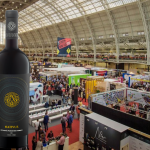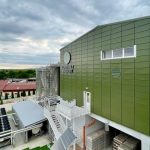Cork, often associated with wine bottles, is far more than a simple stopper. This unassuming material, harvested from the bark of cork oak trees, is a cornerstone of sustainable innovation, elegant tradition, and advanced technological applications. From its unique cellular structure to its myriad uses in space technology and fashion, cork represents one of nature’s most versatile gifts.
During our recent visit to the Corticeira Amorim headquarters in Portugal, we had the honour and the pleasure to have both the company CEO, Antonio Amorim, and João Queirós, Business Developer and an expert in circular economy, to introduce us to a fascinating universe.
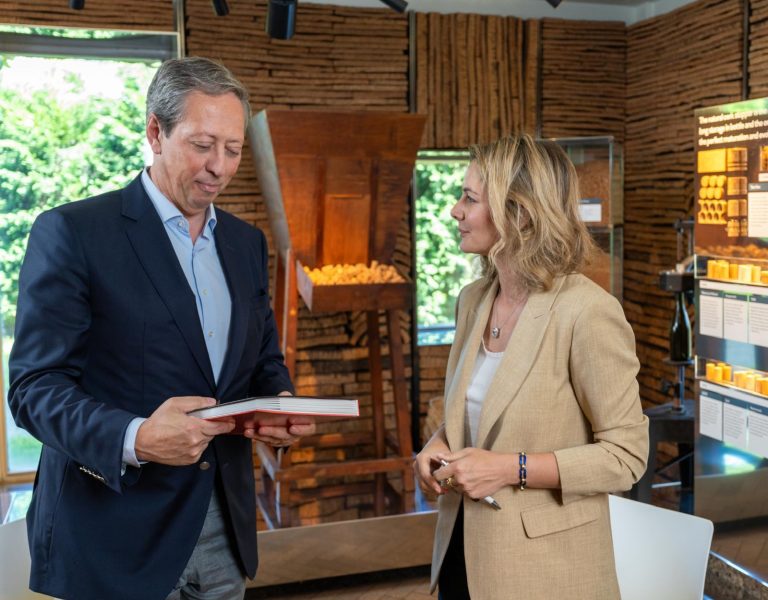
The Origin and Harvest of Cork
Cork is harvested from the cork oak tree (Quercus suber), which thrives primarily in the Mediterranean region, particularly in Portugal—the global leader in cork production. The harvesting process is unique in that the tree is never cut down; instead, the bark is carefully stripped every nine years. This allows the tree to regenerate its bark, contributing to the environment by continuing to sequester carbon dioxide throughout its long life – often spanning over two centuries.
Acest proces de recoltare regenerativ face ca pluta să fie una dintre cele mai prietenoase materii prime pentru mediu din lume. Pentru fiecare tonă de plută recoltată, se estimează că 73 de tone de CO₂ sunt captate de stejarul de plută. Mai mult, pădurile de pluta susțin o biodiversitate bogată și ajută la prevenirea deșertificării, oferind atât beneficii ecologice, cât și economice.
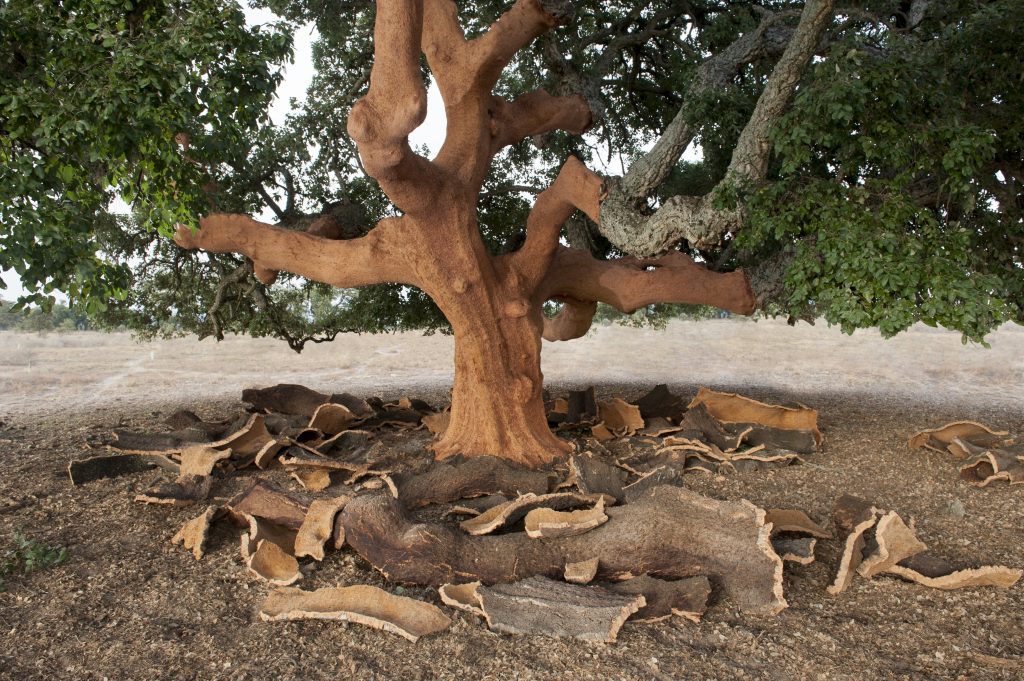
The Unique Properties of Cork
The extraordinary qualities of cork stem from its cellular structure, composed of millions of tiny, air-filled cells. About 60 to 70% of cork’s volume is made up of air, giving it an exceptional combination of lightness and elasticity. This structure provides a range of advantages:
- Thermal and acoustic insulation: Cork is a natural barrier to heat and sound.
- Impermeability: Its suberin content makes it resistant to liquids and gases.
- Resilience: Cork can be compressed and still return to its original shape.
- Fire resistance: Cork is naturally fire retardant and does not release toxic gases when burned.
- Biodegradability and recyclability: At the end of its life cycle, cork decomposes naturally or can be repurposed.
These properties make cork a standout material across industries.
Traditional and Expanding Applications
Wine and Sparkling Wine Closures
Historically, cork’s most iconic use has been in wine stoppers. It is estimated that more than 12 billion cork stoppers are produced annually, over 5.5 billion of them being produced by Amorim Cork. Natural cork allows wine to age gracefully, maintaining the integrity of the flavour while allowing for minute oxygen exchange. Sparkling wines, particularly champagne, also benefit from cork’s elastic memory, which ensures a tight seal under pressure.
Cork seem to be an useful addition even to the production process of Champagne sparkling wines, as Antonio Amorim recently pointed out in an interview for Bark to Bottle:
„In a recent study we carried out with Champagne, we found that tirage (the second fermentation) using cork rather than an aluminium stopper provides a lot of advantages, a range of scents and, most importantly, a better taste to the wine. Some of the world’s best champagne brands are rapidly adopting cork tirage.
We must take advantage of this moment to state that the cork stopper can add value to wine. More than just a closure, it is an enological seal in its own right”.
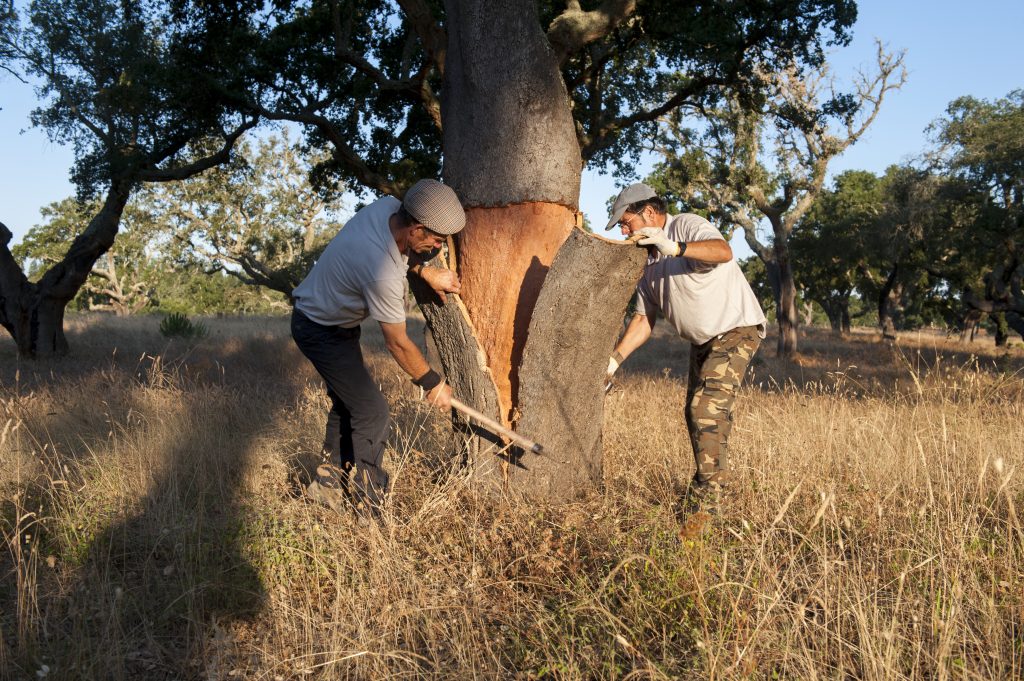
Cork in Building and Interior Design
Cork is widely used in flooring, wall coverings, and insulation due to its sound-dampening and temperature-regulating properties. Its aesthetic appeal, combined with functional advantages, has made cork a popular choice in green architecture and interior design.
Even more, for regions facing high differences between the day and night temperatures, cork has proved to be a perfect solution for filling the expansion joints, a critical part of modern architecture and a historical weak point of large-scale buildings.
Cork in Fashion and Footwear
In the fashion world, cork is employed in shoes, handbags, wallets, and accessories. Its lightweight, flexible, and sustainable nature appeals to eco-conscious designers and consumers alike. It’s also hypoallergenic and comfortable – perfect for footbeds and orthopaedic products.
Cork in Aerospace and Technology
Cork’s reach even extends into space. Specialised cork composites are used in satellite protection systems and thermal shields. These applications leverage cork’s heat resistance and lightweight density, making it ideal for environments where every gram and degree matters.
Innovation and the Circular Economy
Cork producers today are reimagining the material through innovation and upcycling. Used corks are collected and transformed into new products, contributing to a thriving circular economy. Ground cork can be used in construction, fashion, automotive components, port fields turf and even surfboards.
Advancements in material science are unlocking cork’s untapped potential. New treatments and technologies enable cork to be combined with other natural fibres or polymers, producing composites that rival synthetic materials in performance – without their environmental costs.
Furthermore, the cork industry is rooted in harmony with nature.
Furthermore, the cork industry is rooted in harmony with nature. Its practices not only preserve ecosystems but also enhance the longevity and value of cork products. Even more, Corticeira Amorim is actually expanding the ecosystem by promoting the plantation of 1.3M cork oak trees on their own 8100 hectares of forest and even beyond its premises, through the recycling programs.
From tree to product and back into the loop, cork is a great example of a sustainable lifecycle.
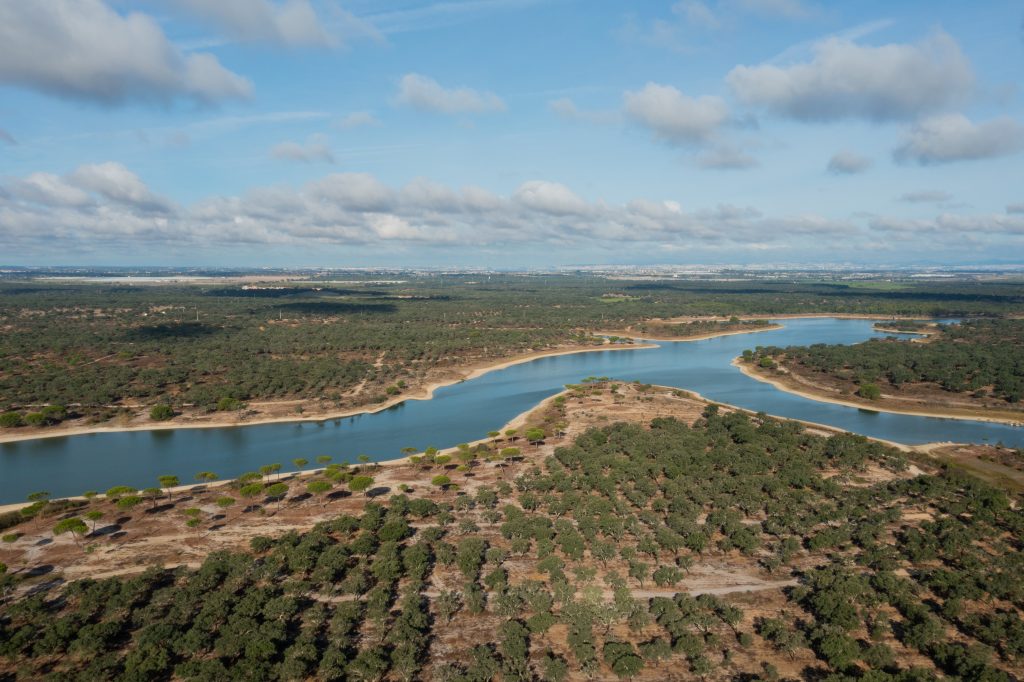
A Future Built on Cork
The full potential of cork is still being uncovered. As industries search for alternatives to petroleum-based materials, cork emerges as a solution of the future, bridging traditional craftsmanship and modern engineering. Whether it’s in a bottle of wine, beneath your feet, or orbiting Earth in a satellite, cork continues to add value through innovation.
In a world increasingly focused on sustainability, cork proves that some of the most advanced materials already exist in nature – they just need to be respected, refined, and reimagined.
